Plein Air Primer
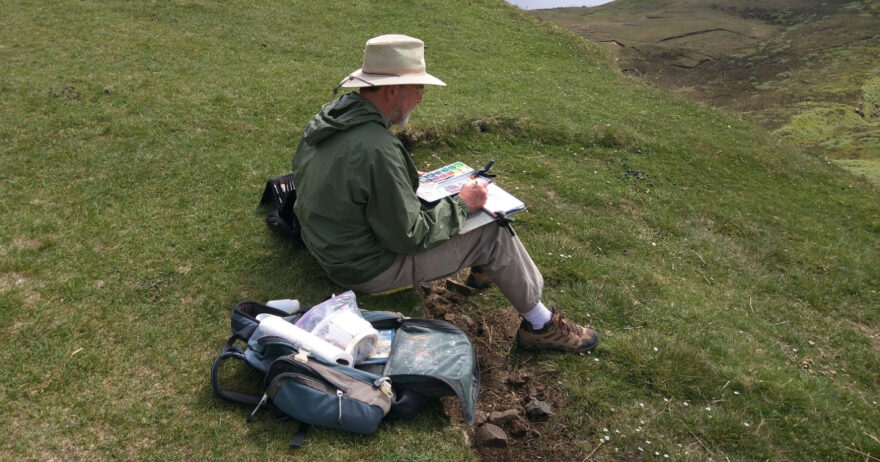
A Getting-Started Guide to Gear & Goals
There’s a lot of thrill in painting outdoors, but also plenty to figure out to make the most of the experience. Michael Chesley Johnson shares his best advice on what to take with you—and what to leave behind.
Packing for a plein air outing should not be like packing for a camping trip. It’s best to keep it simple. The bare minimum is something to paint with and something to paint on. You don’t even need an easel. There have been many times when I’ve gone out with just a small gouache kit and worked in my lap while sitting on a rock. If you’re more ambitious, however, the following tools and supplies will expand your plein
air experience.
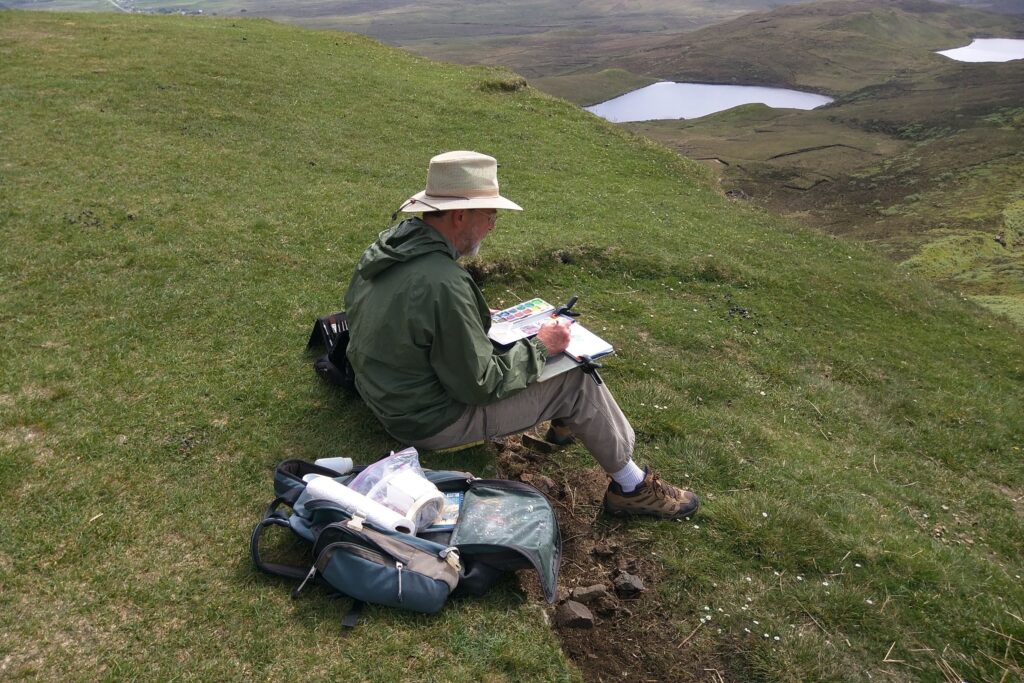
Easel
If you prefer not to paint in your lap, you’ll need a field easel. There’s a wide range to fit every need. Here are some things to look for:
✓
Lightness. Lugging a heavy easel to your painting spot can be cumbersome. Choose
a lighter option, so you can carry it—and all your materials—in one trip from the car.
✓
Simplicity. An easel that’s complicated to set up steals precious time and energy. The fewer the pieces, hinges, screws and bolts, the better.
✓
Stability. Make sure the easel has a broad footprint so it can withstand some wind. If you get one with a tripod, make sure the head isn’t made of plastic; you can’t tighten plastic enough to avoid wobble.
Basic types of easels include:

Pochade. This box easel has room for everything, including wet panel storage, brushes and paints. It’s small enough that it can be used in your lap without a tripod (although most come with a tripod mount).

Clamshell. A clamshell easel is basically a stripped-down box easel. The bottom part serves as a palette, and the top is a panel holder. It requires a modular approach to your gear, as you’ll need to bring a separate wet panel carrier, turp jar, paint box and brush holder (plus a tripod).
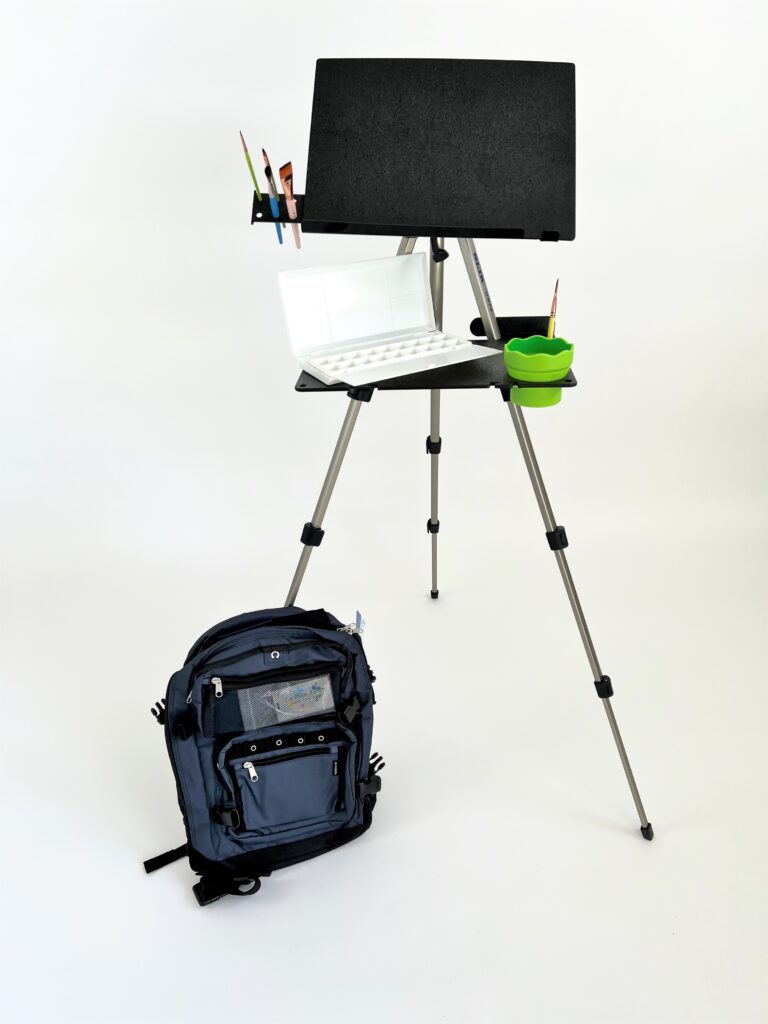
Palette/panel holder combo. In most versions of this easel, the palette rests on the legs of a tripod, with a panel holder attached to the tripod’s mast. Like the clamshell concept, it’s modular, and you’ll need to carry other items separately.
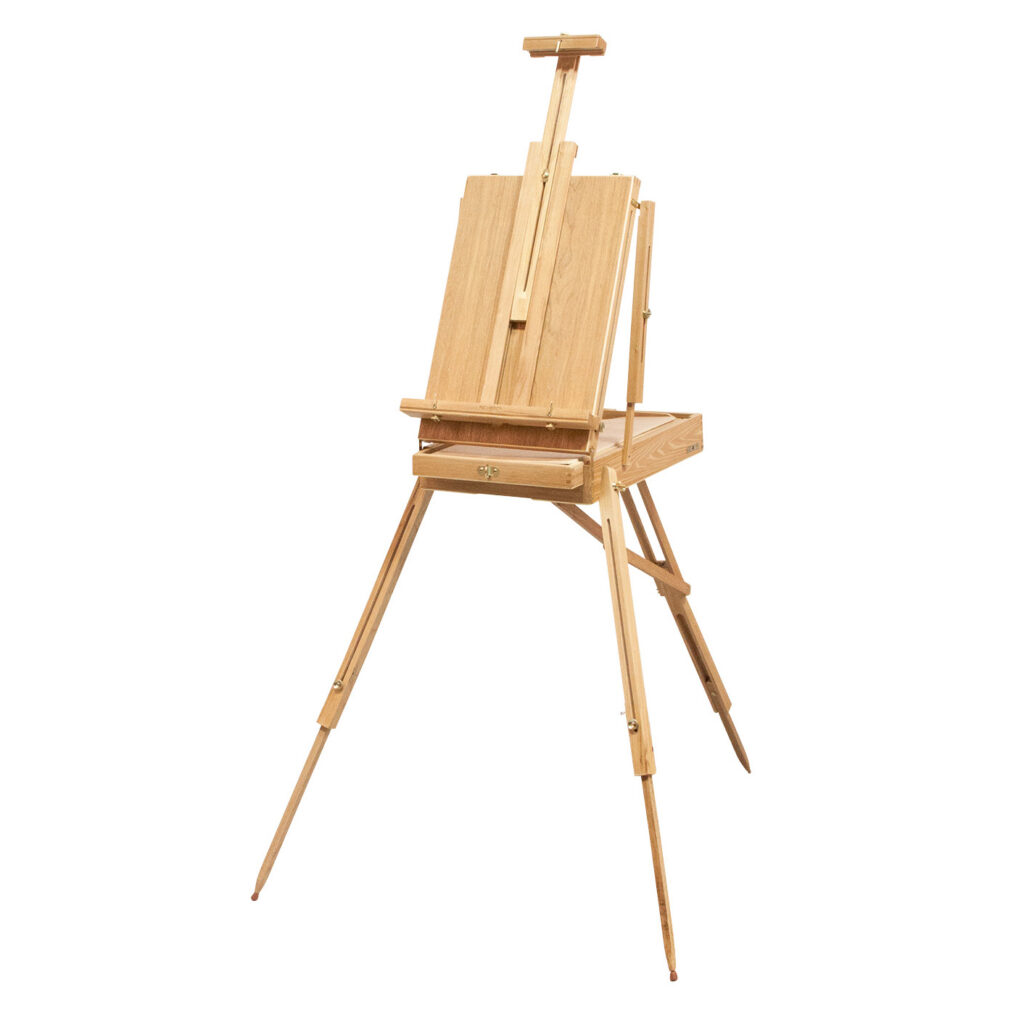
French. This type of easel has plenty of room for materials, serves as its own tripod and is incredibly stable in the wind. The only drawback is that it can be heavy and takes a little experience to set up. Although a French easel is considered “old school” nowadays, it’s my go-to when all else fails.
Most likely, you’ll find no perfect solution. Ask around to see what your painting buddies like use. Chances are, they’ll have a setup completely different than yours—and it might suit your needs better.
Materials
When it comes to plein air materials, plan on taking a very stripped-down version of whatever you use in the studio. As with easels, the same concepts apply: lightness, simplicity and stability. For example, if you’re an oil painter, take two brushes rather than eight. Take a limited palette of three colors instead of a dozen. Take items that will stay securely in your work area without being blown over by wind. Most importantly, take only the minimum you need to accomplish your goal. For instance, if I want to study tree shapes from life without worrying about color, I’ll take just my sketchbook and pencil. Here are some suggested basic supplies:
✓
Basic painting or sketching kit. It takes some experience to figure out how little you really need, so don’t worry if you don’t get it right the first time. If you’re an oil painter, make sure you have a way to transport wet paintings. Pastel painters, bring a tablecloth to place under your easel so you can find dropped pastels easily and minimize breakage. If you’re an acrylic painter, take a spray bottle of water to moisten your paint if you work in dry locations. Watercolor or gouache painters, you may not even need to bring water—I’ve painted at the beach with sea water!
✓
A stool. Useful if you need to sit and can’t find a large rock. Or, take a piece of egg crate foam to sit on.
✓
An umbrella. Handy when working in strong sunlight, but I often leave it behind when I know I can find areas of shade.
✓
A cellphone. Especially if you paint alone. Let someone know where you’re going.
✓
Water and snacks. These are must-haves!

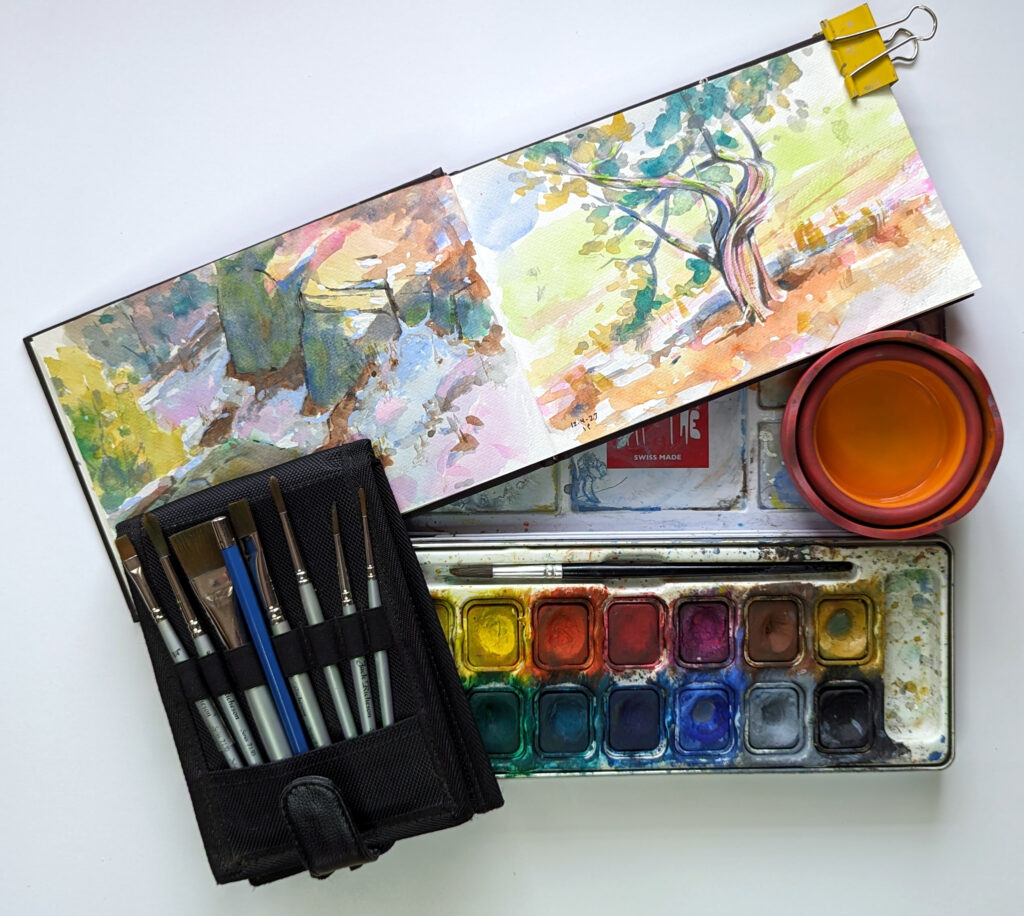

Setting a Goal
You’ll find that having a clear goal when you go out painting will make you a better painter, faster. Consider having one of four simple goals before heading out the door:
✓
Explore an area. This is what I do if I’m in unfamiliar territory. When in Scotland for the first time, for example, I didn’t know what to paint. So, rather than making finished paintings, I focused on just sketching the things that were new to me, such as craggy castle ruins. It’s a relaxing approach to painting, and it increases your familiarity with a strange land.
✓
Gather reference material. It’s like exploring, but with more focus. On my Scotland trip, I became enamored of a beautiful, ancient stone bridge and knew I wanted to make a big painting of it when I got home. I gathered references: color studies in gouache, pencil sketches and photos. Once home, where I had all the tools and materials I needed at my disposal, I was able to create that larger work.
✓
Work on a skill or problem. This is usually a workshop goal, but you can do it on your own. If, for example, you don’t understand color temperature, consider making color studies of adjacent shapes that differ in temperature. Or you may have a question you want to answer: Is it true that white in shadow is darker than black in light? See for yourself by observing and painting such a situation.
✓
Create a finished painting. This can be a Herculean task compared to the others. You have to be at the top of your game, employing good design, good color and good edge treatment. I usually reserve this for plein air competitions or when I’m practicing for one. Many artists, however, enjoy bringing a painting fully to completion on-location regularly. It takes experience, time and energy, and, in my opinion, plenty of coffee.
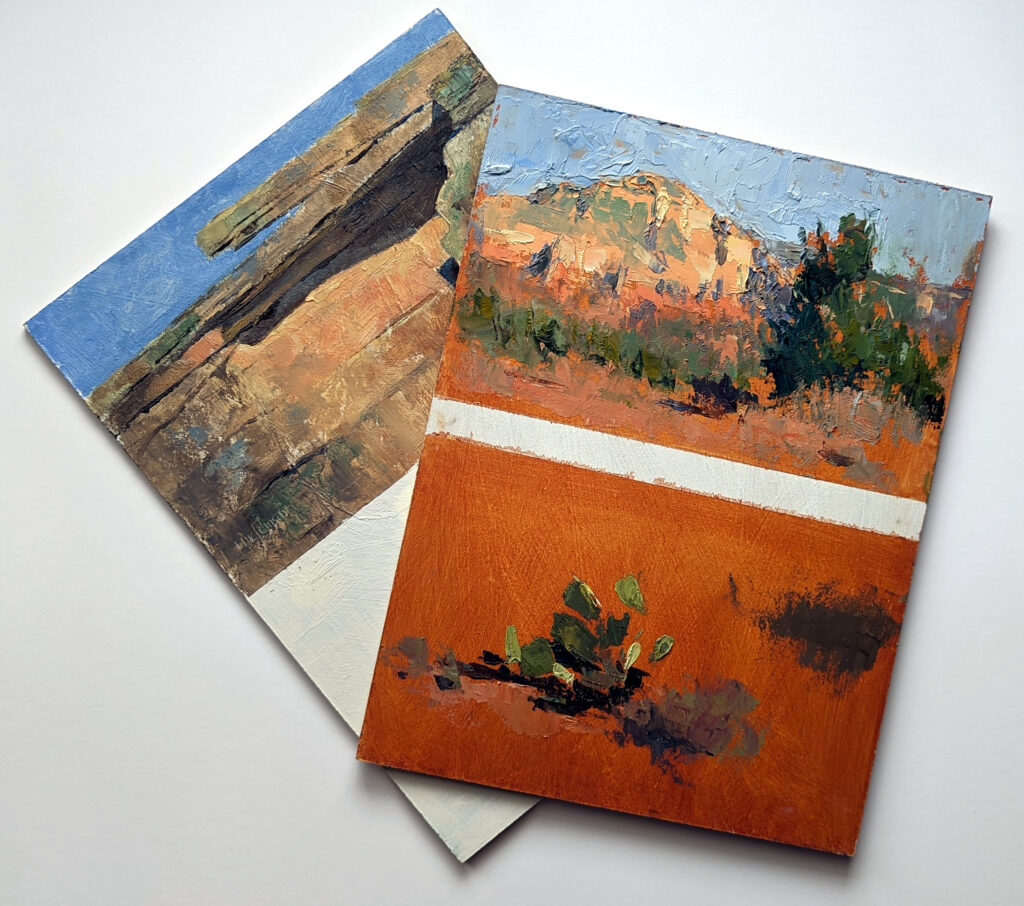
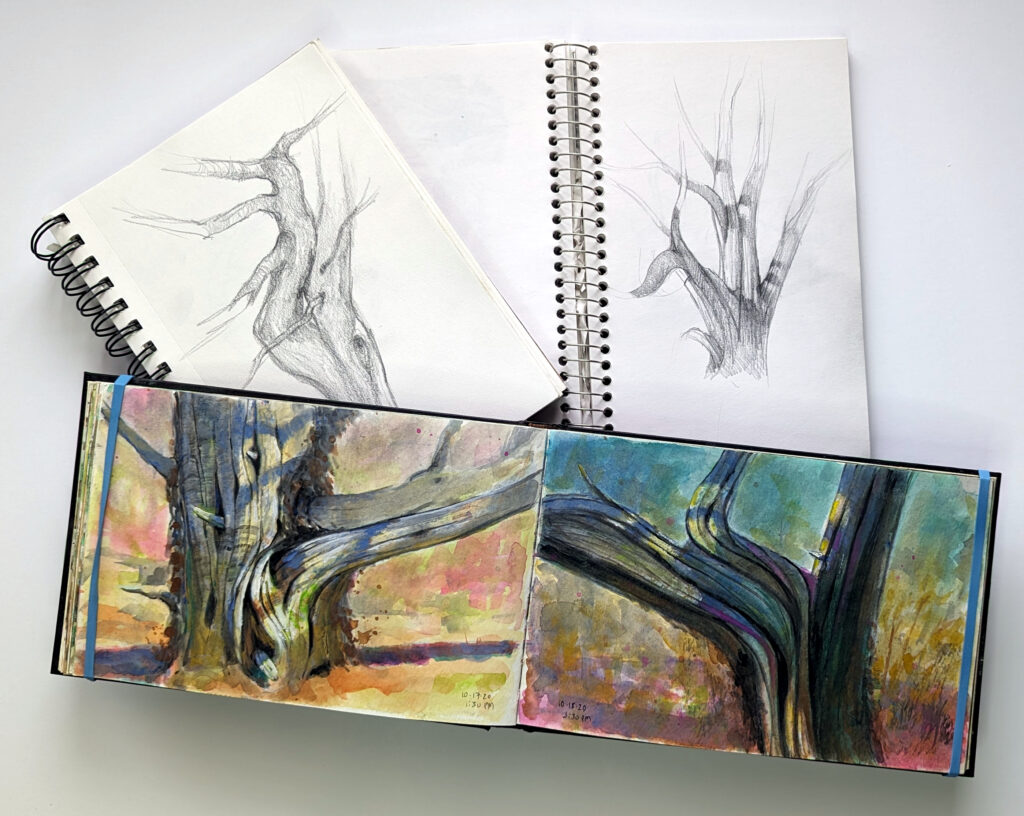
Even if you only reach one of these goals on your plein air excursion, sometimes it’s nice to let serendipity be your guide—and this is probably the most relaxing goal of all.
About the Artist
Michael Chesley Johnson is an artist, workshop instructor and author of Beautiful Landscape Painting Outdoors: Mastering Plein Air.
From Our Shop
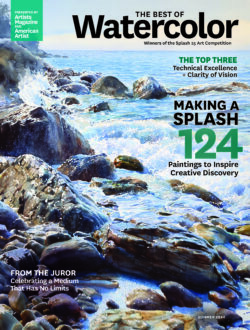

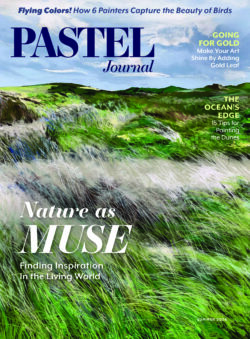
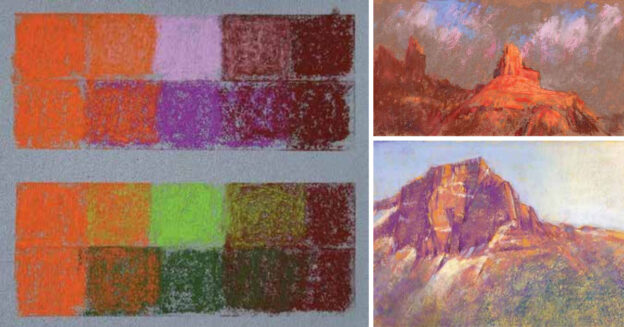

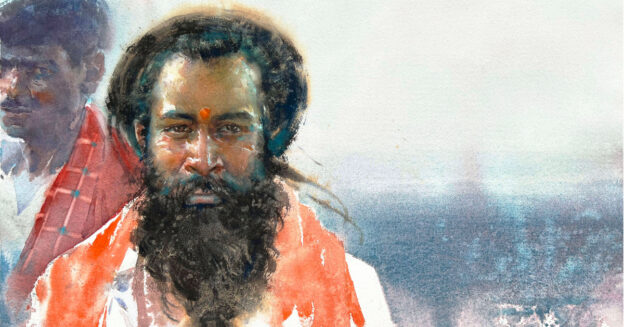
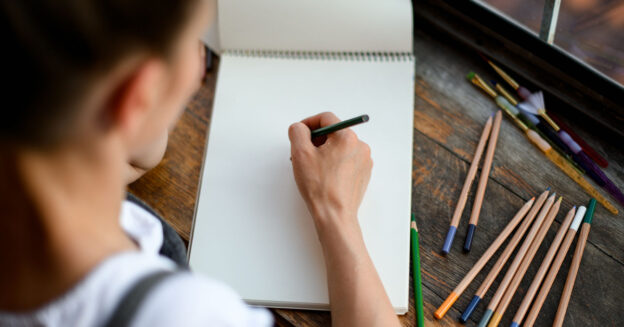

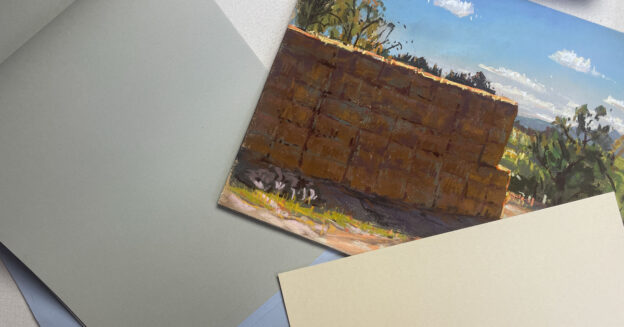
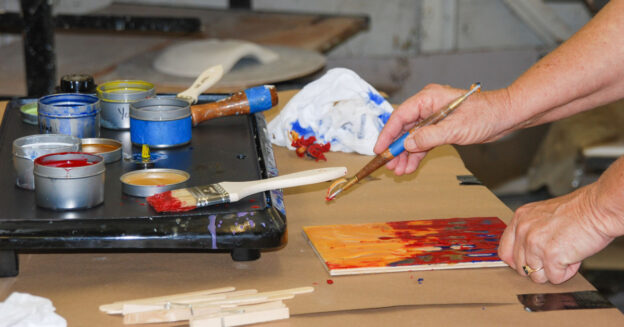



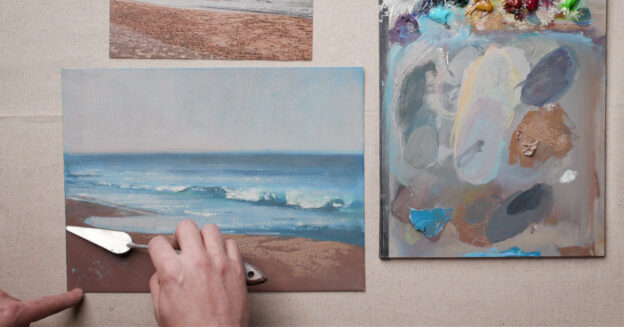
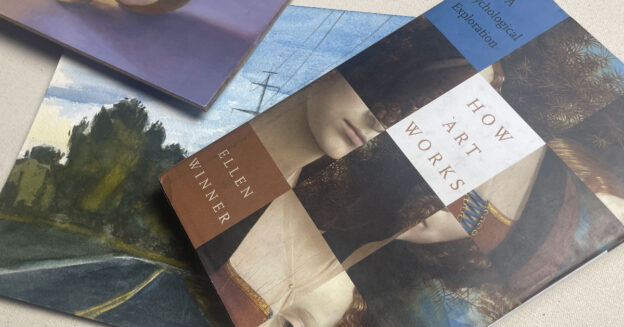

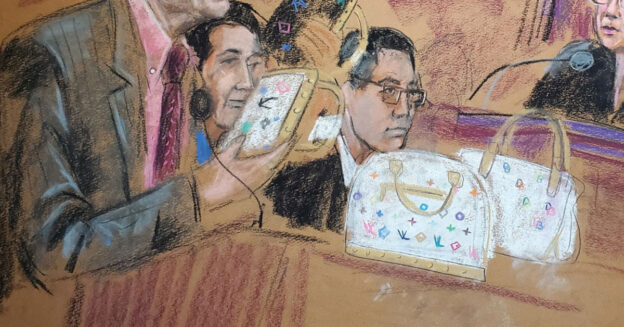


Join the Conversation!